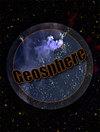Compositions and ages of Early Cretaceous volcanic and plutonic rocks in central Tibet: Insights into the magmatic and uplift response to slab breakoff
IF 1.7
3区 地球科学
Q3 GEOSCIENCES, MULTIDISCIPLINARY
引用次数: 0
Abstract
We present new zircon U-Pb ages and Hf isotope compositions as well as whole-rock major- and trace-element geochemical and Sr-Nd isotopic data for silicic plutonic and volcanic rocks from the Duolong area of central Tibet. Combined with existing data, our new data indicate that these plutonic and volcanic rocks were formed in two stages ca. 120 Ma and ca. 110 Ma, respectively, in a postcollisional extensional setting that was triggered by slab breakoff. The similar geochemical compositions of granitoids and rhyolites, combined with their close spatial and temporal relationships, suggest that they were both derived from juvenile crustal material within a single magmatic system. We propose that the two inferred crustal melting events in the Duolong area were caused by two episodes of deep mantle activity triggered by the transition of the plate subduction angle from steep to shallow in response to the ascent of buoyant continental lithosphere during slab breakoff. Furthermore, rapid surface uplift during the late Early Cretaceous caused by slab breakoff made an important contribution to the formation of the proto–Tibetan Plateau. This study provides new insights into postcollisional tectonomagmatism and plateau uplift in central Tibet triggered by slab breakoff. We propose more generally that tectonic uplift during postcollisional processes (i.e., slab breakoff and lithospheric delamination) is a major contributor to plateau uplift in collision zones.西藏中部早白垩世火山岩和深成岩的组成和年龄:对板块断裂的岩浆和隆升反应的认识
本文报道了西藏多龙地区硅质深部岩体和火山岩的锆石U-Pb年龄和Hf同位素组成,以及全岩主微量元素地球化学和Sr-Nd同位素数据。结合现有资料,我们的新资料表明,这些深成岩和火山岩分别形成于约120 Ma和约110 Ma两个阶段,形成于板块断裂引发的碰撞后伸展环境中。花岗岩类和流纹岩的地球化学成分相似,时空关系密切,表明它们均来源于同一岩浆系统内的幼年地壳物质。我们认为,多龙地区的两次地壳熔融事件是由板块俯冲角由陡向浅转变引起的两期深部地幔活动引起的,这是对大陆浮力岩石圈在板块断裂期间上升的响应。此外,早白垩世晚期由板块断裂引起的地表快速隆升对原青藏高原的形成有重要贡献。该研究为青藏高原板块断裂引发的后碰撞构造岩浆作用和高原隆升提供了新的认识。我们更普遍地提出,碰撞后过程中的构造隆升(即板块断裂和岩石圈剥离)是碰撞带高原隆升的主要因素。
本文章由计算机程序翻译,如有差异,请以英文原文为准。
求助全文
约1分钟内获得全文
求助全文
来源期刊

Geosphere
地学-地球科学综合
CiteScore
4.40
自引率
12.00%
发文量
71
审稿时长
6-12 weeks
期刊介绍:
Geosphere is GSA''s ambitious, online-only publication that addresses the growing need for timely publication of research results, data, software, and educational developments in ways that cannot be addressed by traditional formats. The journal''s rigorously peer-reviewed, high-quality research papers target an international audience in all geoscience fields. Its innovative format encourages extensive use of color, animations, interactivity, and oversize figures (maps, cross sections, etc.), and provides easy access to resources such as GIS databases, data archives, and modeling results. Geosphere''s broad scope and variety of contributions is a refreshing addition to traditional journals.
 求助内容:
求助内容: 应助结果提醒方式:
应助结果提醒方式:


